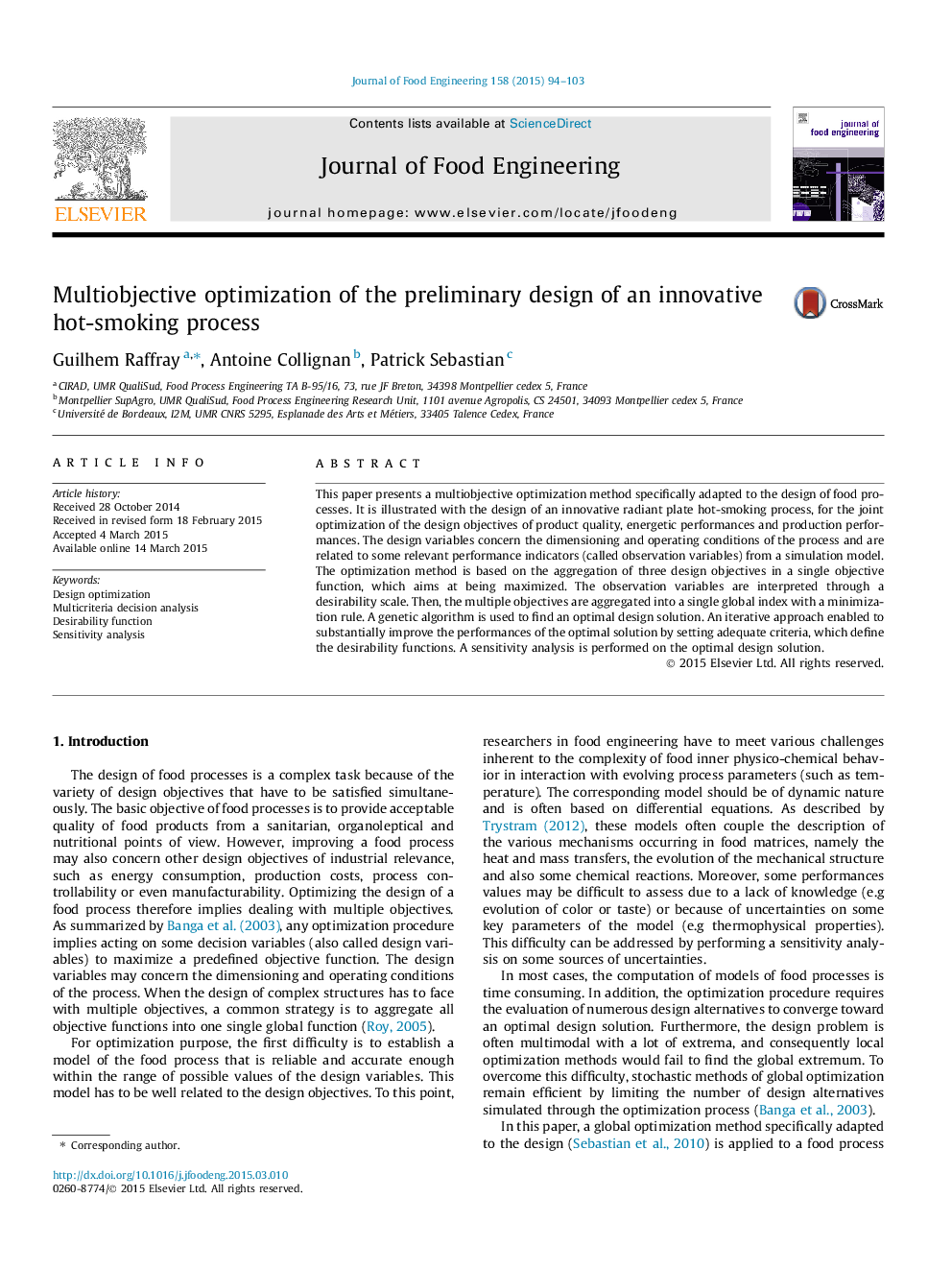| Article ID | Journal | Published Year | Pages | File Type |
|---|---|---|---|---|
| 6665434 | Journal of Food Engineering | 2015 | 10 Pages |
Abstract
This paper presents a multiobjective optimization method specifically adapted to the design of food processes. It is illustrated with the design of an innovative radiant plate hot-smoking process, for the joint optimization of the design objectives of product quality, energetic performances and production performances. The design variables concern the dimensioning and operating conditions of the process and are related to some relevant performance indicators (called observation variables) from a simulation model. The optimization method is based on the aggregation of three design objectives in a single objective function, which aims at being maximized. The observation variables are interpreted through a desirability scale. Then, the multiple objectives are aggregated into a single global index with a minimization rule. A genetic algorithm is used to find an optimal design solution. An iterative approach enabled to substantially improve the performances of the optimal solution by setting adequate criteria, which define the desirability functions. A sensitivity analysis is performed on the optimal design solution.
Keywords
Related Topics
Physical Sciences and Engineering
Chemical Engineering
Chemical Engineering (General)
Authors
Guilhem Raffray, Antoine Collignan, Patrick Sebastian,
